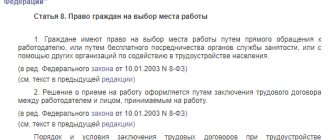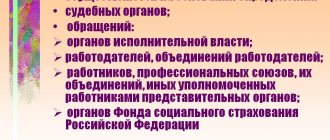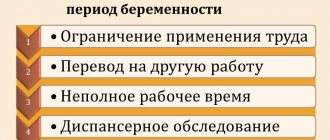Occupational Safety and Health
Current as of November 15, 2019
From 01/01/2020, the rules for conducting a special assessment of working conditions (SOUT) are changing. New responsibilities will appear for all its participants: organizations conducting assessments, employers and even labor inspectors. In our material you will find ready-made instructions for conducting a special assessment, which already takes into account legislative innovations. And also refresh your knowledge in this area, learn about the mistakes that employers make when conducting special assessments and their consequences. We will also tell you about automatic fines for special assessments - very soon they will become a reality.
Why is a special assessment needed and who is required to conduct it?
The state strives to ensure citizens the right to normal working conditions and guarantee compensation for harm caused to their health by harmful and dangerous factors present in their workplaces. One way to solve this problem is a set of procedures called a special assessment of working conditions (SOUT).
Labor legislation places the main burden of responsibilities in connection with conducting a special assessment on employers ─ they must, in due time, organize a survey of workplaces to identify dangerous and harmful production factors, and based on the results of such a survey, provide employees with additional guarantees and benefits.
Why is a special assessment needed?
In addition to the formal reason, there is also a moral one: the commission determines the hazard class in which a particular person has to work. The commission's findings help create specific recommendations for occupational safety and health. If the requirements of the legislator are met, the likelihood of accidents and occupational diseases is reduced. After determining the hazard class, wages, pension contributions, and material compensation are optimized.
A timely special assessment procedure protects the employer from fines and civil liability, and allows the employee to maintain health or receive adequate financial compensation and create proper working conditions.
How the legislation on SOUT changed until 2020
At first, special assessment activities were called “Workplace Certification”, then they were renamed SOUT (special assessment of working conditions). Since 2014, the main nuances of this procedure are regulated by the Law of December 28, 2013 No. 426-FZ “On the special assessment of working conditions.”
Since then, this law has been amended 5 times: by the laws of June 23, 2014 No. 160-FZ, of July 13, 2015 No. 216-FZ, of May 1, 2016 No. 136-FZ, of July 19, 2018 No. 208-FZ and of December 27, 2018 No. 553-FZ.
Despite the fact that the procedure for conducting special assessments has already been studied and has been used in practice for several years, the legislation on special assessment continues to be adjusted. The purpose of the amendments is to improve the quality of special assessments in order to ensure guarantees and rights of workers.
Now another package of amendments to Law No. 426-FZ is approaching ─ draft No. 769142-7 is already in the State Duma. The start of application of the new version of the law is scheduled for January 2020.
The procedure for assessing working conditions at workplaces has been reformed
A special assessment of working conditions is intended to replace the previous procedures - certification of workplaces and state examination of working conditions.
It involves a transition from the “list” approach to providing guarantees and compensation to workers in harmful and hazardous industries to taking into account the actual impact on the employee’s body of harmful and (or) dangerous factors in the working environment and the labor process.
A special assessment of working conditions involves a one-time study of the workplace by the employer. Its results are taken into account when paying insurance premiums to the Pension Fund for the purpose of providing guarantees and compensation to employees, as well as in other procedures in the field of labor protection (providing workers with personal protective equipment, organizing medical examinations, assessing the level of occupational risks, investigating industrial accidents and occupational diseases, etc. ).
Working conditions according to the degree of harmfulness and danger are divided into 4 classes - optimal, acceptable, harmful and dangerous. Harmful ones are also divided into 4 subclasses.
It is possible to reduce the class (subclass) of working conditions in the case of employees using effective PPE, as well as in relation to workplaces in accordance with industry characteristics.
The law defines the stages of conducting a special assessment of working conditions, the rights and obligations of the employer, employee and organization carrying out the assessment, and the requirements for the latter.
In relation to workplaces where potentially harmful and (or) dangerous factors have not been identified, a declaration of compliance of working conditions with state regulatory requirements is provided. Working conditions in such workplaces are considered acceptable.
The declaration is valid for 5 years and is automatically extended for another period in the absence of accidents at work or occupational diseases.
In case of declaration, the employer is freed from the need to carry out expensive procedures for research and measurement of potentially harmful and dangerous factors in the working environment and the labor process.
To optimize the costs of a special assessment of working conditions, the law provides for the possibility of taking into account the results of research and measurements obtained by the employer’s testing laboratory (center) during production control.
The law provides a list of factors of the working environment and the labor process that must be measured. It is formed taking into account law enforcement practice and is consistent with Russian and international standards.
The degree of participation of trade unions in assessing working conditions has been expanded.
The formation of a federal state information system for recording the results of a special assessment of working conditions is envisaged. In addition, employers were required to post assessment results on their official websites.
The federal law comes into force on January 1, 2014, with the exception of certain provisions for which a different period of entry into force is provided.
What's new in the SOUT procedure since 2020
Globally, legislators did not rewrite Law No. 426-FZ. But starting from 2020, there will be a number of significant adjustments to the procedure for conducting SOUT.
The changes affected not the special assessment procedure itself, but the preparatory stages for it and the final procedures, as well as a number of other provisions of Law No. 426-FZ.
If we list these amendments very briefly, they will fit into a few lines:
- the organization conducting the special assessment is responsible for registering the employer before the start of the special assessment in the FSIS SOUT system and then notifying him of the special identification number assigned by the system ─ without this number, the SOUT report will be invalid;
- the start of validity of the SOUT results will shift ─ it will be possible to use the results of the special assessment only after information about it appears in the FSIS SOUT (federal information system for recording the results of the special assessment). Now this moment is tied to the date of approval of the report.
Important clarification! New edition of Part 4 of Art. 8 of Law No. 426-FZ provides that the period of the special assessment will continue to be calculated from the date of approval of the report regarding the results of the special assessment, containing information that constitutes a state or other secret protected by law.
But that's not all the changes. In the new edition of Law No. 426-FZ, a number of other aspects will be corrected and added regarding the additional responsibilities of appraiser organizations, the timing of approval of the SOUT report, the use of UKEP when sending a copy of the approved report, etc. We will talk about them further.
Off-plan assessment
In some cases, the employer needs to conduct a special assessment unscheduled, that is, earlier than after 5 years (Part 1 of Article 17):
- when introducing a new workplace;
- if there is an order from the State Transport Inspectorate to conduct a special assessment;
- when changing the technological process at the workplace, when replacing production equipment, the composition of materials used, raw materials, etc.;
- if an accident occurred at the workplace (not due to the fault of third parties);
- if an occupational disease is detected;
- if there is a reasoned proposal from the elected body of the primary trade union organization to conduct an unscheduled SOUT.
The period for conducting an unscheduled special assessment is 6 months. Moreover, if the organization began its activities after January 1, 2014, all jobs are considered newly created and are subject to special assessment within 6 months.










